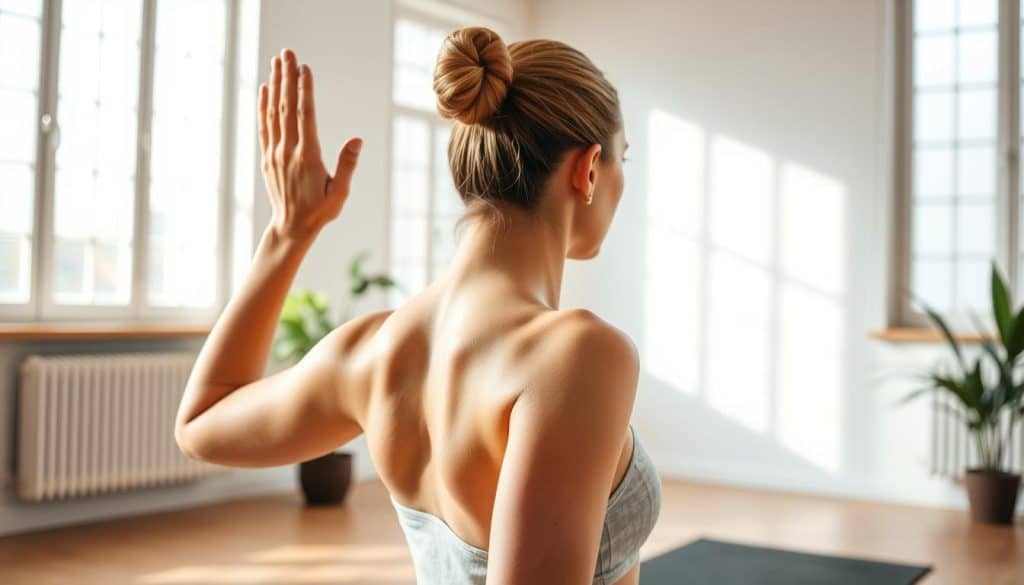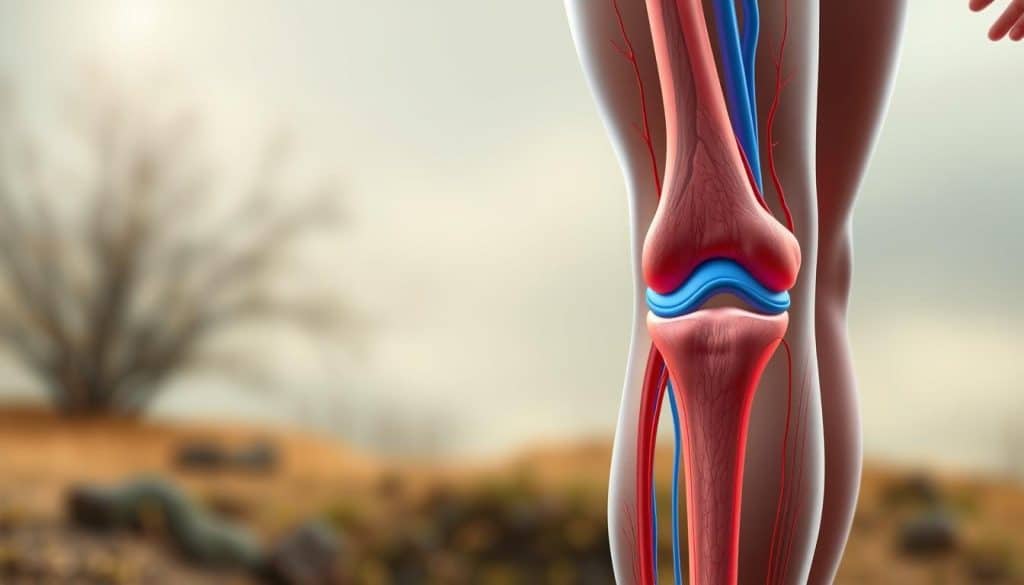Did you know 73% of patients report reduced pain within just 3 sessions of targeted hands-on care? At Riverside Sports Therapy in Calgary, we blend science-backed techniques with personalized attention to help you regain mobility faster.
Our clinic specializes in treatments that go beyond temporary fixes. Unlike generic approaches, we focus on identifying the source of discomfort through precise joint and muscle assessments. This method allows us to create tailored plans addressing both symptoms and underlying issues.
Whether you’re an athlete sidelined by strain or someone battling chronic stiffness, our evidence-based strategies prioritize long-term healing. We combine movement analysis with therapeutic techniques designed to restore function while minimizing downtime.
Key Takeaways
- Targeted hands-on care accelerates healing for muscle and joint concerns
- Personalized treatments address root causes rather than just symptoms
- Combines scientific assessment with practical rehabilitation strategies
- Effective for both acute sports-related issues and chronic discomfort
- Focuses on restoring full mobility while preventing future setbacks
Understanding the Basics of Manual Therapy for Injury Recovery
Skilled practitioners use precise methods to unlock your body’s natural healing potential. This approach focuses on resolving movement restrictions through direct contact and controlled pressure.
What Is Hands-On Care?
Experts apply specific pressures to muscles and joints using their hands. This helps identify stiffness patterns while improving blood flow. Treatment plans combine scientific assessment with practical rehabilitation strategies.
Guiding Principles Behind Effective Care
Our Calgary team follows three core rules:
- Tailor methods to individual tissue responses
- Progress treatment intensity gradually
- Combine anatomical knowledge with real-time feedback
Common methods include joint mobilization and myofascial release. These techniques reduce scar tissue formation while restoring natural movement patterns. Each session focuses on measurable improvements in flexibility and comfort.
Proper training in biomechanics ensures safe application. This expertise allows practitioners to address root causes rather than temporary symptoms. The result? Lasting improvements in how your body moves and feels.
Why Manual Therapy is Essential for Healing Sports Injuries
Athletes facing setbacks need solutions that address both immediate discomfort and long-term recovery. Our Calgary clinic specializes in approaches that tackle the unique challenges of sports-related tissue damage through science-backed interventions.
Benefits for Pain Relief
Persistent discomfort from strains or sprains often stems from compressed nerves and restricted movement. Skilled practitioners apply pressure techniques that trigger your body’s natural pain-blocking responses. This reduces inflammation while restoring proper alignment in affected areas.
Enhanced Healing and Circulation
Improved blood flow accelerates tissue repair by delivering vital nutrients to damaged cells. Hands-on methods break down adhesions that limit mobility, creating optimal conditions for your body’s recovery systems. Faster waste removal further supports the regeneration process.
Common athletic issues like muscle tears respond particularly well to these strategies. Treatments simultaneously address stiffness in joints and soft tissues, preventing compensatory movements that lead to secondary injuries. Regular sessions help maintain peak physical condition between competitions.
How Manual Techniques Restore Joint and Muscle Function
Restoring proper movement patterns requires addressing both stiff joints and tight muscles. At Riverside Sports Therapy, our specialists combine precise methods to improve how your body performs daily tasks and athletic movements.
Joint Mobilization Benefits
Gentle, controlled motions help re-educate restricted joints. Practitioners apply rhythmic pressure to restore natural gliding mechanics between bone surfaces. This process enhances lubrication while reducing stiffness that limits your range.
Improved joint mobility supports better posture and movement efficiency. Sessions focus on activating nerve receptors that sharpen your body’s position awareness. Many clients notice easier bending or reaching within 2-3 visits.
Soft Tissue Manipulation Advantages
Specialized pressure techniques break up adhesions in muscles and connective tissues. These methods increase blood flow to areas needing repair while decreasing protective tension. You’ll experience reduced tightness during activities like lifting or running.
Our approach balances immediate relief with lasting changes. Therapists work through layers of tissue to address deep restrictions affecting flexibility. Regular care helps maintain supple muscles that move freely without strain.
Steps to Begin Your Manual Therapy Journey
Starting your path to better movement begins with understanding your unique needs. Our Calgary clinic uses a structured process to map out solutions tailored to your body’s specific requirements.
Initial Assessment Process
Your first visit involves a 60-minute deep dive into your movement history and current challenges. Therapists analyze how you walk, bend, and perform daily tasks using video analysis and hands-on tests. This reveals hidden imbalances affecting your comfort.
We assess three key areas:
- Joint mobility through controlled movement patterns
- Muscle activation during functional activities
- Nerve responsiveness to pinpoint irritation sources
Developing Your Action Plan
Findings from your assessment shape a roadmap targeting your priorities. Your therapist selects techniques matching your tissue readiness and recovery pace. Sessions might combine gentle joint gliding with targeted muscle release methods.
Progress gets tracked through measurable goals like:
- Increased shoulder rotation for tennis serves
- Reduced morning stiffness in arthritic knees
- Improved balance during hiking trails
We adjust your plan weekly based on how your body responds. This adaptive approach ensures steady gains while respecting your healing timeline.
Understanding Range Motion and Flexibility
Imagine reaching overhead without pain or bending down effortlessly—this is what optimal range offers. At Riverside Sports Therapy, we measure how your joints move across different planes to create personalized strategies for restoring natural motion.
Our specialists begin by identifying restrictions using validated measurement tools. We track how far your knees bend during squats or shoulders rotate during throws. This data reveals whether limitations stem from tight muscles, joint stiffness, or nerve irritation.
Customized Techniques for Joint Health
We employ three evidence-based methods:
- Guided stretching to lengthen shortened tissues safely
- Rhythmic joint gliding to improve lubrication
- Muscle activation drills to rebuild control
These approaches address both passive flexibility (what we can move for you) and active range (how you move independently). For soccer players with stiff ankles or office workers with tight hips, restoring full motion prevents compensatory patterns that lead to new injuries.
Progress gets measured through functional benchmarks like easier stair climbing or smoother golf swings. We combine hands-on techniques with home exercises to maintain gains between sessions. The result? Movement that feels fluid rather than forced.
Relief from Muscle Tension and Stiffness
Persistent tightness doesn’t have to be your normal. At Riverside Sports Therapy, we deploy science-backed methods to dissolve stubborn knots and restore supple movement. Our Calgary team focuses on releasing restrictive patterns that trap muscles in cycles of discomfort.

Techniques Offering Immediate Relief
Specialized pressure applications target hyperactive trigger points – those tender nodules causing referred pain. Sustained compression followed by gentle stretching helps reset muscle fibers. This approach breaks tension cycles while improving oxygen flow to strained areas.
We combine three core strategies:
- Myofascial release to unwind connective tissue restrictions
- Neuromuscular re-education balancing muscle activation
- Breath-guided positioning enhancing relaxation responses
These methods address both surface stiffness and deeper restrictions. Therapists work through protective muscle guarding using measured pressure. Many clients report feeling lighter movement within their first session.
Our protocols also tackle secondary tension from compensation patterns. By addressing root causes across muscle groups, we help prevent recurring stiffness. The result? Lasting comfort that supports your active lifestyle.
Improving Joint Mobility and Healthy Circulation
Your joints and circulatory system work together like precision machinery. At Riverside Sports Therapy, we use targeted strategies to optimize this relationship through science-backed interventions.

Restoring Movement and Boosting Blood Flow
Our Calgary team combines three essential approaches:
- Synovial Fluid Activation: Specialized techniques enhance lubrication within joint capsules, reducing friction during movement while delivering nutrients to cartilage
- Rhythmic Mobilization: Gentle pumping motions stimulate blood flow to flush out inflammation markers and accelerate tissue repair
- Lymphatic Support: Precise pressure applications help clear cellular waste, reducing swelling in injured areas
These methods address both mechanical restrictions and biological processes. Graded joint mobilizations progressively restore natural gliding motions without forcing tissues beyond their current capacity. Simultaneously, improved circulation brings oxygen-rich blood to areas needing repair.
You’ll notice changes through practical improvements like easier squatting motions or reduced morning stiffness. Our protocols adapt weekly based on your progress, ensuring steady gains in comfort and function. By maintaining this balance, we help you move freely while supporting your body’s innate healing capabilities.
Practical Techniques and Hands-On Approaches
Effective care starts with precise interventions that target problem areas directly. Our Calgary specialists employ methods backed by biomechanical research to address tension patterns influencing your movement quality.
Trigger Point Release Strategies
Persistent knots often respond best to sustained pressure combined with guided stretching. Practitioners locate specific tension points through palpation, then apply measured force to reset muscle fibers. This approach interrupts pain cycles while restoring natural tissue elasticity.
Three key benefits emerge from these strategies:
1. Reduced referral pain patterns affecting multiple areas
2. Improved oxygen delivery to overworked muscles
3. Enhanced joint mobility through decreased protective tension
Your care plan might incorporate positional release techniques or instrument-assisted methods. These approaches adapt to your body’s responses, ensuring progress without overwhelming sensitive tissues. Regular sessions help maintain fluid movement patterns between appointments.
